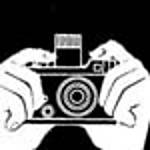Perhaps I can help a little (and confuse a lot!) here. The seat-back cushion could be slid on, or off, at will. I would imagine that it would be more comfortable, if the pilot flew in shirtsleeves, while, with warm clothing, Mae West, etc., it could have been a nuisance. A cushion has been found in the wreckage of a Battle of Britain Mk.I, so their use was pretty extensive.
That etched seat, that you're doing, is an early version; it's missing the lozenge-shaped depression in the base, for the dighy's air bottle (bl---y uncomfortable according to one pilot,) and doesn't have the kink in the left thighguard, where the parachute's pull cord went, without fouling. The small oval, in the right thighguard should be opened up into a hole, since the right strap of the Sutton harness went through it (I believe it was done to avoid the strap fouling the seat raising/lowering lever.) The oval, in the left thigh guard, shouldn't be there.
The "beefing up," of the u/c, was the introduction of the 4-spoke wheel, from around March, 1944 (prior to that, and, in some Squadrons, for some time after, the 5-spoke wheel was used.) The strengthening was to enable bomb-carrying; it was just a change of oleo that was needed for the tracking change ( the mod, for that, is dated post-war, late 1945, so wartime IXs shouldn't have the blister over the wheel wells) and torque links weren't used before November, 1944. Don't use the Malta Spitfire as a guide (I did, and got well-and-truly burned,) since the wings were a donation from an un-named source, and are definitely not the originals.
The narrow single blister, on the IX cannon doors, didn't come into use until January, 1944,
The bulged upper engine cowling, on the IX & XVI, came into use from July, 1944; prior to that, the lines of the cowling were identical to the VIII.
If I think of any more anomalies, I'll let you know.
Edgar

















 .. thus the emoticon. ... most important: Have fun and do not care hat others say!
.. thus the emoticon. ... most important: Have fun and do not care hat others say!






























 (I have bulit a bf 109 1/48 airfix and i know
(I have bulit a bf 109 1/48 airfix and i know  )
)









 ... of course you know these details are there ....
... of course you know these details are there ....


 ... shoot a pic of the finished model with the same result ...
... shoot a pic of the finished model with the same result ...

















